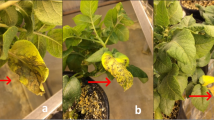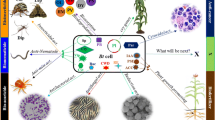Abstract
Permethrin resistance in the Learn-PyR strain of house fly was examined in four genetically derived substrains, each being homozygous for a different “resistant” autosome of the Learn-PyR strain. The resistance of these derivative strains was characterized toxicologically and biochemically. The relative levels of resistance to permethrin conferred by each autosome were 5>3>1>2. Three factors were associated with resistance: (1) increased mixed-function oxidase (MFO) activity associated with elevated levels of cytochrome P-450, cytochrome b5, and NADPH-cytochrome c reductase (P-450 reductase) activity; (2) target-site insensitivity (kdr); and (3) decreased cuticular penetration. Permethrin resistance factors on chromosome 1 consisted of a piperonyl butoxide (PB)-suppressible mechanism correlated with increased levels of cytochromes P-450 and b5; on chromosome 2, a PB-suppressible mechanism associated with elevated amounts of cytochrome P-450; on chromosome 3, decreased cuticular penetration, kdr, and increased amounts of P-450 reductase activity; and on chromosome 5, a largely PB-suppressible mechanism correlated with elevated levels of cytochrome P-450 and P-450 reductase activity.
Similar content being viewed by others
References
Adams, M. E., and Miller, T. A. (1979). Site of action of pyrethroids: Repetitive “backfiring” in flight motor units of house fly. Pestic. Biochem. Physiol. 11218.
Anonymous (1984). Pyrethroid sales. Calif. Ariz. Press 23:2.
Farnham, A. W. (1973). Genetics of resistance of pyrethroid-selected houseflies, Musca domestica L. Pest. Sci. 4513.
Fine, B. C., Goodin, P. J., and Thain, E. M. (1963). Penetration of pyrethrin I labelled with carbon-14 into susceptible and pyrethroid resistant houseflies. Nature 199927.
Finney, D. J. (1952). Probit Analysis 2nd ed., Cambridge University Press, Cambridge.
Georghiou, G. P. (1969). Genetics of resistance to insecticides in houseflies and mosquitoes. Exp. Parisitol. 26224.
Hodgson, E. (1983). The significance of cytochrome P-450 in insects. Insect Biochem. 13237.
MacDonald, R. S., Solomon, K. R., Surgeoner, G. A., and Harris, C. R. (1985). Laboratory studies on the mechanisms of resistance to permethrin in a field-selected strain of house flies. Pest. Sci. 1610.
Motoyama, N. (1984). Pyrethroid resistance in a Japanese colony of the housefly. J. Pest. Sci. 9523.
Murray, D., and Cull, P. (1984). Resistance strategy works at Emerald. Austral. Cottongrower Feb.–Apr.:22.
Omura, T., and Sato, R. (1964). The carbon monoxide-binding pigment of liver microsomes. J. Biol. Chem. 2392370.
Plapp, F. W., Jr. (1984). The genetic basis of insecticide resistance in the house fly: Evidence that a single locus plays a major role in metabolic resistance to insecticides. Pest. Biochem. Physiol. 22194.
Plapp, F. W., Jr., and Casida, J. E. (1969). Genetic control of house fly NADPH-dependent oxidases: Relation to insecticide chemical metabolism and resistance. J. Econ. Entomol. 621174.
Plapp, F. W., Jr., and Hoyer, R. F. (1968). Possible pleiotropism of a gene conferring resistance to DDT, DDT analogs, and pyrethrins in the house fly and Culex tarsalis. J. Econ. Entomol. 61761.
Sawicki, R. M., and Farnham, A. W. (1967). The use of visible mutant markers in the study of resistance of house flies to insecticides. Proc. Fourth Brit. Insect. Fung. Conf. 1355.
Sawicki, R. M., Devonshire, A. L., Farnham, A. W., O'Dell, K., and Morres, G. D. (1984). Factors affecting resistance to insecticides in house-flies, Musca domestica L. II. Close linkage on autosome 2 between an esterase and resistance to trichlorphon and pyrethroids. Bull. Entomol. Res. 74197.
Scott, J. G., and Georghiou, G. P. (1984). Influence of temperature on knockdown, toxicity, and resistance to pyrethroids in the house fly, Musca domestica. Pest. Biochem. Physiol. 2153.
Scott, J. G., and Georghiou, G. P. (1985a). Rapid development of high-level permethrin resistance in a field collected strain of house fly under laboratory selection. J. Econ. Entomol. 78 316.
Scott, J. G., and Georghiou, G. P. (1985b). Mechanisms responsible for high levels of permethrin resistance in the house fly. Pest. Sci. (in press).
Scott, J. G., Shono, T., and Georghiou, G. P. (1984). Genetic analysis of permethrin resistance in the house fly, Musca domestica L. Experientia 40416.
Tsukamoto, M. (1983). Methods of genetic analysis of insecticide resistance. In Georghiou, G. P., and Saito, T. (eds.), Pest Resistance to Pesticides Plenum Press, New York, p. 71.
Yu, S. J., and Terriere, L. C. (1979). Cytochrome P-450 in insects. 1. Differences in the forms present in insecticide resistant and susceptible house flies. Pest. Biochem. Physiol. 12239.
Author information
Authors and Affiliations
Rights and permissions
About this article
Cite this article
Scott, J.G., Georghiou, G.P. The biochemical genetics of permethrin resistance in the Learn-PyR strain of house fly. Biochem Genet 24, 25–37 (1986). https://doi.org/10.1007/BF00502976
Received:
Revised:
Issue Date:
DOI: https://doi.org/10.1007/BF00502976




